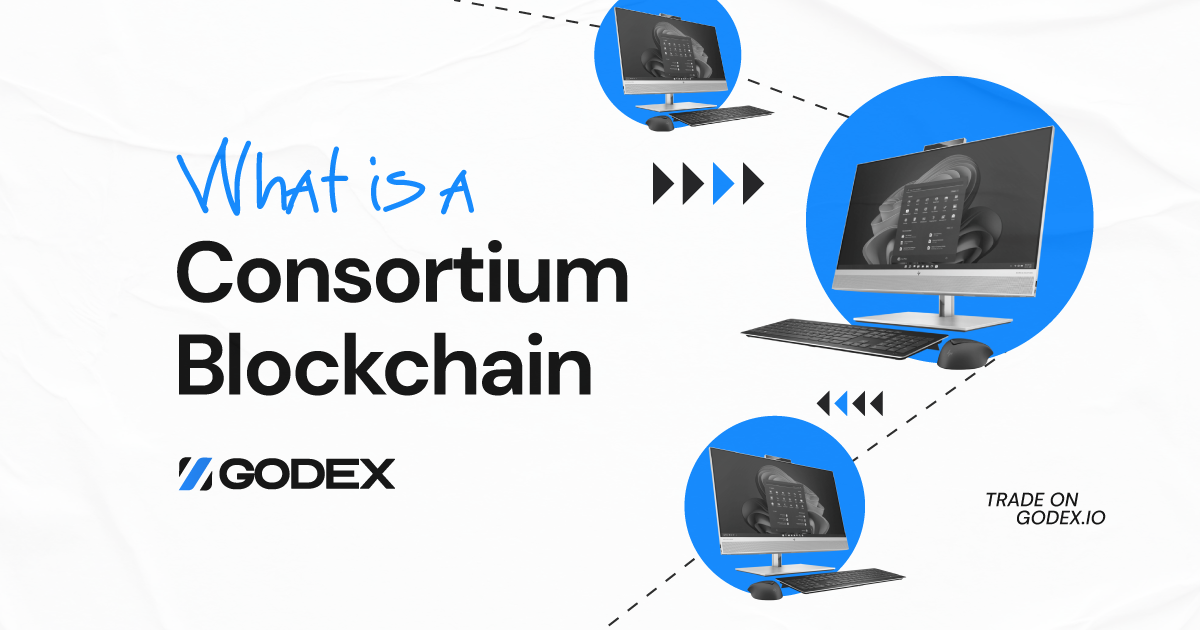Table of Contents
In today’s fast-paced and interconnected world, industries are continually seeking innovative solutions to address challenges and drive growth. Step into a new realm of possibilities with blockchain technology, a groundbreaking innovation that has redefined the rules of business engagement. Spanning across finance, supply chain, healthcare, and logistics, blockchain’s transformative prowess holds the key to reshaping multiple industries.
One powerful avenue for harnessing the benefits of blockchain is through the establishment of blockchain consortiums. These collaborative networks unite industry players to leverage the transformative potential of blockchain, fostering innovation, enhancing security and efficiency, optimizing workflows, and unlocking novel avenues for expansion. In this article, we delve into the diverse ways industries can benefit from blockchain technology and discover the significance of blockchain consortiums in driving collective progress.
Consortium blockchain architecture
Corporate-consortium blockchain architecture consists of several core components.
Nodes
First, there are multiple participating nodes, which are typically controlled by the consortium members. These nodes validate and verify transactions on the blockchain network.
Consensus
This is another critical component of the corporate-consortium blockchain structure that ensures agreement among participating nodes on the validity of transactions and the order in which they are added to the blockchain. Consensus mechanisms like Proof of Authority (PoA) or Practical Byzantine Fault Tolerance (PBFT) are commonly employed to achieve consensus in consortium blockchains.
Ledger
The distributed ledger serves as an immutable database that records and stores all transactional data. The consensus mechanism, collectively decided upon by its members, ensures the accuracy and consistency of these records.
Smart contracts
The Autonomous agreements with predefined rules play a pivotal role in automating and enforcing transaction terms within the network.
Governance and Permission models
Consortium blockchains may have governance models in place to make collective decisions and manage the network’s operations, as well as permissions to ensure that only trusted individuals can collaborate in the consensus process and access blockchain data.
How does a consortium blockchain work?
A consortium blockchain operates through a joint network of trusted members, typically from different organizations or industries, who come together to form a shared blockchain infrastructure. Unlike public blockchains, a consortium blockchain is permissioned, meaning that only approved members can join and contribute to the network. These members validate and verify transactions using a consensus mechanism agreed upon by the consortium. This ensures that the blockchain remains secure, transparent, and streamlined, allowing the consortium members to collaborate, share data, and execute smart contracts in a trusted and decentralized manner.
Benefits of a Consortium Blockchain
A consortium blockchain offers several benefits to its participants:
Elevated Confidentiality: Consortium blockchains offer an enhanced level of privacy in contrast to their public counterparts. Only approved members have access to the network, ensuring that sensitive business information remains confidential and secure.
Improved Scalability: Consortium blockchains can handle a larger volume of transactions compared to public blockchains. With a smaller number of trusted members, the network can achieve faster transaction processing and higher scalability.
Increased Efficiency: By eliminating the need for intermediaries or central authorities, consortium blockchains streamline processes and reduce operational costs. Participants can interact directly, eliminating the need for manual reconciliation and paperwork.
Trusted Collaboration: Consortium blockchains promote trust among participants by leveraging a shared infrastructure. This enables secure and efficient collaboration, data sharing, and execution of smart contracts, leading to improved business relationships and opportunities for innovation.
Regulatory Compliance: Consortium blockchains enable participants to meet regulatory requirements more effectively. The permissioned nature of the network allows for better control and governance, ensuring compliance with industry standards and regulations.
Cost Savings: Through shared infrastructure and streamlined processes, consortium blockchains can lead to cost savings for participants. By eliminating redundant systems and intermediaries, businesses can optimize resources and reduce operational expenses. Overall, consortium blockchains offer a harmonious blend of the openness and integrity found in public blockchains, along with the confidentiality and governance of private networks, making them an attractive option for businesses seeking to leverage blockchain technology for their mutual benefit.
Some examples of consortium blockchains
There are several notable consortium blockchain examples in various industries:
Aura: The Aura Blockchain Consortium is a collaborative network of trusted participants in the blockchain industry. It aims to foster innovation, drive adoption, and create a standardized ecosystem for blockchain-based solutions. Aura’s blockchain consortium coin, AURA, serves as a utility token, facilitating transactions, incentivizing participation, and unlocking various features and benefits of the ecosystem.
Hyperledger Fabric: Developed by the Linux Foundation, Hyperledger Fabric is an open-source blockchain framework that facilitates the creation of consortium blockchains. It has been adopted by various industries, including finance, supply chain, and healthcare.
R3 Corda: Corda is a distributed ledger technology (DLT) platform designed for businesses. It enables the creation of consortium blockchains where participants can transact and share data securely. R3, the company behind Corda, collaborates with a consortium of banks and financial institutions.
B3i: The Blockchain Insurance Industry Initiative (B3i) is a consortium of insurance companies aiming to streamline insurance processes using blockchain technology. Their platform enables secure and efficient sharing of data and smart contract execution among participating insurers.
IBM Food Trust: IBM Food Trust is a consortium blockchain platform focused on improving transparency and traceability in the food supply chain. It allows participants, including retailers, suppliers, and farmers, to track and verify the origin and journey of food products.
TradeLens: TradeLens represents a cutting-edge blockchain solution crafted jointly by IBM and Maersk, specifically designed to cater to the needs of the worldwide shipping sector. It aims to enhance supply chain efficiency by enabling secure sharing of trade-related information among participants, including shipping companies, ports, and customs authorities.
These examples highlight the diverse applications of consortium blockchains across industries, demonstrating the potential for collaboration, efficiency, and trust that can be achieved through this technology.
Read also Which Crypto Exchanges Do Not Report To the IRS?
FAQ
Who controls a consortium blockchain?
In a consortium blockchain, control is typically distributed among the participating entities or organizations. Unlike a centralized authority, decision-making and governance are shared among the members of the consortium, ensuring a more democratic and collaborative approach to managing the blockchain network. This decentralized control fosters transparency, trust, and cooperation among the consortium members.
What are the drawbacks of using a consortium blockchain?
While consortium blockchains offer numerous advantages, they also come with certain drawbacks. One of the main challenges is the complexity of governance and decision-making processes, as multiple entities must agree on consensus protocols and network rules. Additionally, the formation and maintenance of a consortium require serious coordination and resources, making it crucial to establish clear rules and guidelines to avoid conflicts of interest among participants.
Can anyone join a blockchain consortium?
Membership in a blockchain consortium is typically not open to everyone. Consortiums are formed by a group of organizations that share a common interest in utilizing blockchain technology for their specific industry or purpose. Membership criteria and eligibility requirements are established by the consortium, and interested parties need to meet those criteria to join. This ensures that consortium members have the necessary expertise, resources, and commitment to actively contribute to the consortium’s goals and collaborate effectively with other participants.
Start a Cryptocurrency exchange
Try our crypto exchange platform
Disclaimer: Please keep in mind that the content of this article is not financial or investing advice. The information provided is the author’s opinion only and should not be considered as direct recommendations for trading or investment. Any article reader or website visitor should consider multiple viewpoints and become familiar with all local regulations before cryptocurrency investment. We do not make any warranties about reliability and accuracy of this information.
 Linda Larsen
Linda Larsen 
Read more
Ripple (XRP) price has been widely discussed by the cryptocurrency community since it has gained public interest in 2017, even though it was founded by Chris Larsen and Jed McCaleb years before. The platform offers innovative blockchain solutions for the banking sector and has the potential to disrupt the whole finance industry. In recent years, […]
In this article we will talk about Ripple (XRP) and its price prediction. What is Ripple (XRP) Ripple is a San Francisco-based startup that was launched in 2012 by Ripple Labs as a global network both for cross-currency and gross payments. Ripple history began in 2004 with the discussions around the digital coin in the […]
You may well think that an article dedicated to a Tether price prediction or the Tether price in general is a little bit strange — it is a stablecoin after all. However, the price of Tether does fluctuate significantly, although it is nowhere near as volatile as non-stablecoin cryptos. This means that staying up to […]
In the article we share our vision at Zcash cryptocurrency main features and add several price predictions. As cryptocurrencies gain global acceptance and decentralisation slowly enters our lives, privacy becomes the main concern when talking about blockchain adoption. It is no secret that distributed ledger is by far the most secure and transparent technology ever […]
Chiliz coin (CHZ) offers a compelling opportunity for traders interested in the intersection of blockchain technology and sports. By enabling fans to influence team decisions through the Socios app, Chiliz directly monetizes fan engagement and connects with major sports teams like Juventus and Paris Saint-Germain. These partnerships not only enhance the platform’s visibility but also […]
The exponential growth of Bitcoin Satoshi Vision (BSV) against the general bear trend on the cryptocurrency market in autumn 2019 has impressed the community. Due to the increasing market capitalization, the newly emerged altcoin was ranked 5th on CoinMarketCap and managed to maintain its high position at the beginning of 2020. In the article we […]